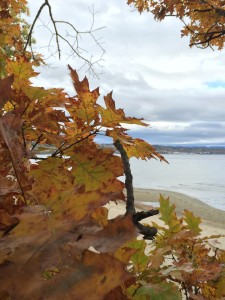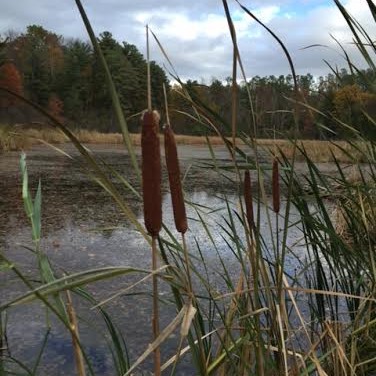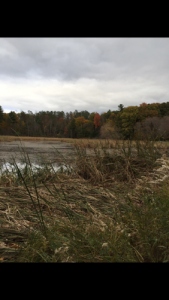The concept of limits is used by biologists, ecologists and social scientists to focus on issues that can stem from the imbalance between a population and the resources used by this population (too many individuals in a population in comparison to the available resources.) More generally, the concept of limits is used to describe the interrelations between humans and t he natural world. The use of the area surrounding my Phenology spot as a public beach has far-reaching effects on the natural area. Due to the high concentrations of people, the wildlife populations of my spot are very low, which is terrible because the pond and surrounding cattails are a perfect habitat for many creatures. The overpopulation of people also reduces the biodiversity of my spot, since many wild animals are uneasy living in such a close proximity to large groups of people. The ecological footprint is rather large- litter and chemicals from beach-goers pollute the area, making it hard for sensitive species to survive.
he natural world. The use of the area surrounding my Phenology spot as a public beach has far-reaching effects on the natural area. Due to the high concentrations of people, the wildlife populations of my spot are very low, which is terrible because the pond and surrounding cattails are a perfect habitat for many creatures. The overpopulation of people also reduces the biodiversity of my spot, since many wild animals are uneasy living in such a close proximity to large groups of people. The ecological footprint is rather large- litter and chemicals from beach-goers pollute the area, making it hard for sensitive species to survive.
In the past, humans placed even more limits on the location that would become my Phenology spot. The use of the area as a industrial site then a petroleum storage area (see “A Brief History” post for more information) resulted in high levels of heavy metals and other toxic wastes in the lake and soil. This limited and sickened the wildlife populations, along with the people that worked and live near North Beach. This was a classic example of the “Tragedy of the Commons;” everyone exploited and polluted the land and lake to the brink of destruction.
The future of my Phenology spot is uncertain- there is a fenced off zoning area on the edge. If a building is put up there, my entrance to the spot would be completely destroyed. Who knows where this destruction would end? Next thing we know, the pond is filled in and covered with a parking lot, and all of the beautiful Boxelders, Basswoods and Northern Red Oaks are cut down. I hope that the Burlington public will not let this happen; not only would a beautiful micro-ecosystem be destroyed, but the beach would lose its natural beauty and appeal.
Societal rules, norms and constraints develop the formal and informal institutions. At the beach, littering is frown upon, since no one wants to go to a dirty beach. This societal norm is also a law, since littering is prohibited. The combination of informal and formal institutions reduces the ecological footprint on my Phenology spot, but does not completely eradicate it. Laws prohibiting development without a permit also serves to reduce negative environmental actions. The management of this area by the City of Burlington stops a resurgence of the Tragedy of the Commons by making the land open to public use, but not change.
The institutions governing the North Beach area have changed greatly throughout history. When the Abenaki were the only humans residing in the area, the land was governed in a sustainable way by Native institutions, which regarded the land as a sacred entity that had to be cared for in thanks for all it gave. Once the Europeans reached the Greater Burlington area, the land began to be exploited for industries such as shipbuilding and tanning, which started the decimation of the land. As time wore on, the land was used for various other industries, and finally ended up as a petroleum storage area in the mid-1900’s. The institutions that governed the land during this period were capitalistic, wanting to squeeze out every last drop of capital that could be taken from the land with no regards to environmental well-being. By the second half of the 20th century, people began enforcing laws to restrict and reduce pollution, and began looking down on those who mindlessly destroyed the land. The most recent institutional turnover has started bringing us in a full circle towards sustainable living once more.

